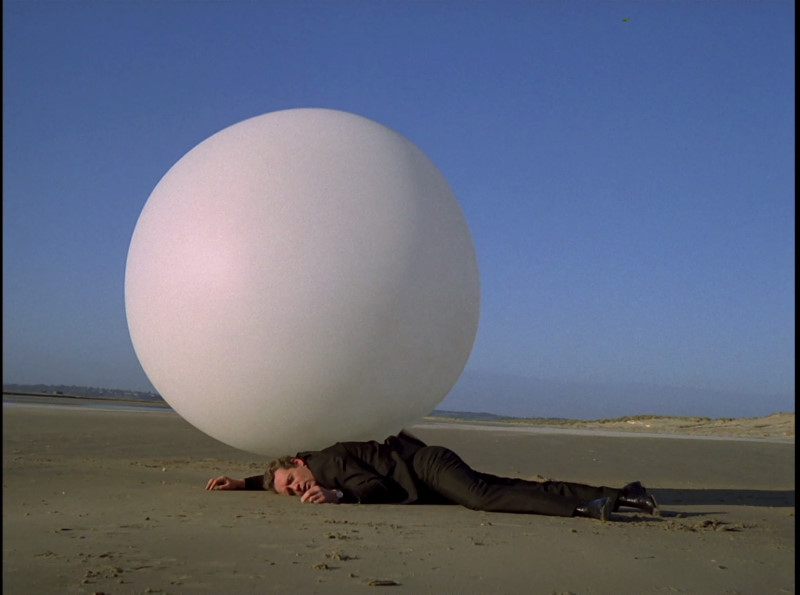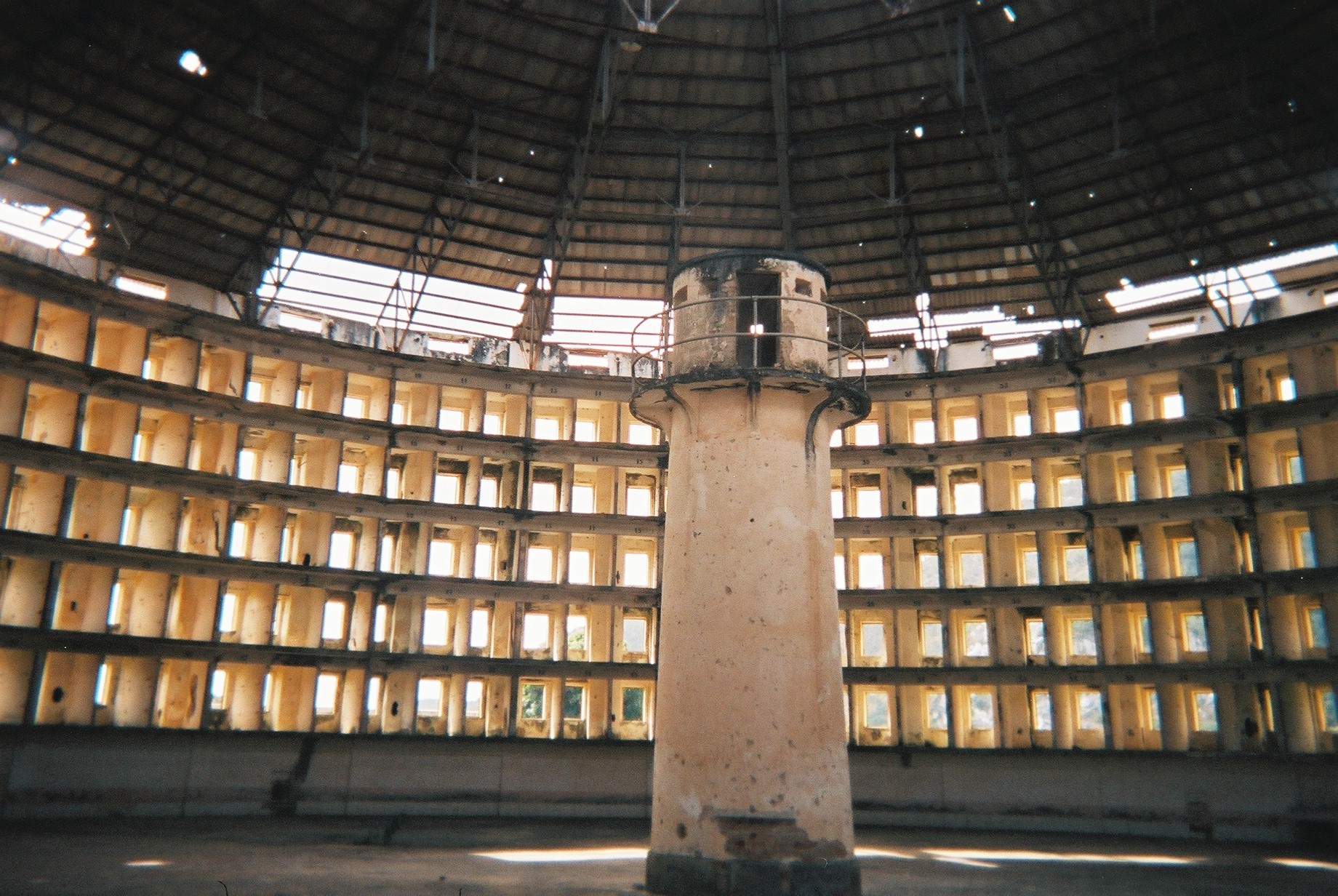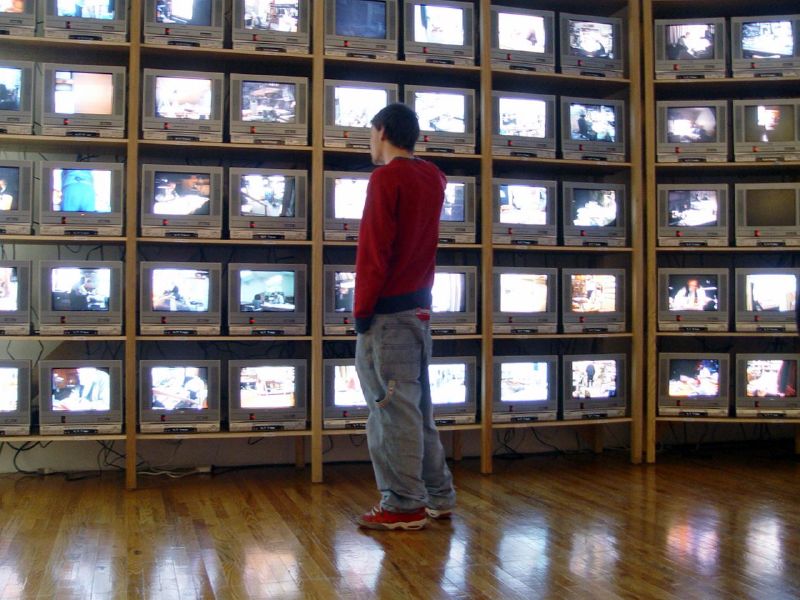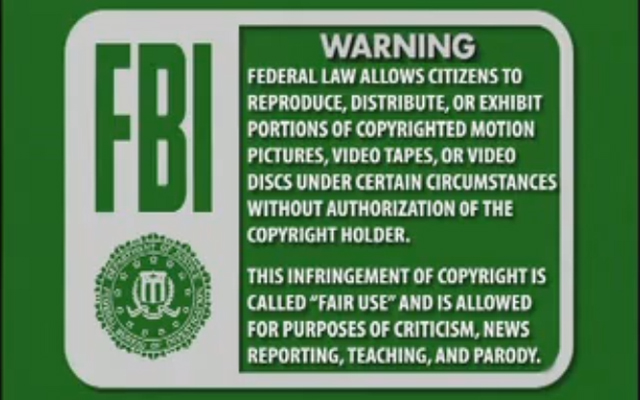Prisoners of Permission: Advancing the Cause of Fair Use
Ralph Beliveau / University of Oklahoma

The idea of “Fair Use” is receiving a great deal more attention these days, but only in particular circles. It needs to be widely and democratically understood, however; at least as widely understood as piracy, respect for intellectual property, and the fear of getting caught downloading episodes of The Prisoner.
On our best days we live creatively, but that creative life is trapped between an increasingly oppressive set of copyright laws, a set of technologies that these laws are ill-equipped to address, a desire to maintain healthy creative structures, and conflicting ideas about information, meaning, and freedom. Is something “free” because you didn’t pay for it, or because it is not under a state of oppression or suppression? Is meaning becoming increasingly individual rather than shared, and is meaning in danger of slipping into irrelevant isolation and solipsism?
[youtube]http://www.youtube.com/watch?v=La072zGqWG4[/youtube]
And what ought we do about the way information (which turned into power at some recent historical point) is distributed in ways that are probably unfair and are clearly unjust?
If we choose not to engage with these question, we drift more and more to what Larry Lessig called a permission culture:
For the first time in our tradition, the ordinary ways in which individuals create and share culture fall within the reach of the regulation of the law, which has expanded to draw within its control a vast amount of culture and creativity that it never reached before. The technology that preserved the balance of our history – between uses of our culture that were free and uses of our culture that were only upon permission – has been undone. The consequence is that we are less and less a free culture, more and more a permission culture.1
The incentives, Lessig argues, are no longer about creativity and creators; instead they are about the preservation of certain forms of business. Those certain forms of business have been in the best position to pay for the kind of lobbying that extends the profitability of those forms, limiting creativity. This is a culture that is already slow to incorporate media literacy into the public’s educational system, much less mount a successful effort to push against the lobbying of permission-granting industries. So an effort must be made to make people aware of what rights they already have, and at least present for them the option to maintain their creative potential.
For better and worse, there is a much clearer sense of property, though ideologically this centers on the private rather than the public sense of property. That sense of private property becomes a definition of freedom, which needs to be protected by constant vigilance. Thus, like Number 6 in The Prisoner, we can never tell the difference between the fences that protect us and the fences that corral us, much less who are the prisoners and who are the guards.
Fair Use and Panopticon
The creativity of our lives is now caught up in the fate of Fair Use. The effort to act ethically and respect the intellectual property of others is pressured in two different ways. In the most positive light, we want creativity and innovation to be rewarded, and we act as if our legal machinery shares this value with us and enacts it on our behalf. Matched to that carrot is the stick of vulnerability. We see take-down orders and feel conspicuous; we read of examples of kids and moms prosecuted for file-sharing activity; we are suspicious that when we are online…or even when we are not!…we are being watched. Maybe we are, maybe we are not…but the possibility of it instigates protective behavior, when we take down the video without a fight, or censor our activities because we might be breaking a law.

As many have discussed, Bentham’s idea of the “panopticon” prison becomes a useful metaphor for our lives, online or not. Long story short, we are not suddenly carried off to prison; the prison, Matrix-like, materializes around us. The blue pill fills our insides with sensory devices.

A creative life then can take three different forms. We can accept it, play along, trust that being observed is being cared for; we can resist and reject the invasion of our privacy represented through the eyes upon us; or we can resist it more through the production of noise, the disruption of patterns, and adding feedback to the relationship.
“Fair Use,” I would like to argue, is an ethical way to resist. As outlined in Reclaiming Fair Use: How To Put Balance Back In Copyright, Pat Aufderheide and Peter Jaszi 2 describe the circumstances where fair use can allow people to get out from under the assumptions of the panopticon. Fair use—the use of copyrighted material without permission or payment—has experienced a resurgence since the 1990s as a tool that can be used by people whose creativity was enhanced by the creative use of new digital technologies. The online platforms for these technologies have—at least at the moment—created a two-way communication model that surpasses the one way, top-down, center-out communication process we think when we use the word “broadcast.”
This may be a threat to traditional media organizations, who are in the position of losing control over how media is accessed and what is done with the content. Sensing this possibility over the last two decades has led to a copyright system that serves corporate content owners and their lawyers, only incidentally helping the creative class that actually produces the content.
But the popular understanding of people’s rights is complex, though not overly so. Fair use, as reiterated in the Documentary Filmmakers’ Statement of Best Practices in Fair Use, holds that copyright has included the ability to quote without payment or permission for 150 years, including the right—not the privilege, but the right—to fair use. The conceptual guiding question is, when taking all the facts and circumstances into account, “whether an unlicensed use of copyright material generates social or cultural benefits that are greater than the cost it imposes on the copyright owner.” These are often summarized as the “four factors” on which fair use is considered: the nature of the use, the nature of the work used, the extent of the use, and its economic effect. Users of copyright material, as Aufderheide and Jaszi note, need to think through answers to two particular questions:
• Did the unlicensed use “transform” the material taken from the copyrighted work by using it for a different purpose than that of the original, or did it just repeat the work for the same intent and value as the original?
• Was the material taken appropriate in kind and amount, considering the nature of the copyrighted work and of the use?3
If the answers to these questions are “yes,” according to this approach, a court is likely to find a use fair.

One of the challenges in understanding “fair use” is the lack of specifics—though this needs to be understood as one of the advantages of the right. It does not ever say, for example, what percentage or what number of seconds are the outside limit within fair use. But the need to think through the argument for the specific use becomes, instead, a way for the creator to understanding meaning. If we consider using copyright material without permission or payment, we need to think through our rationale for that use under the rights we have in “fair use.”
In other words, this becomes a valuable way for all of us as creative people to become more media literate. We are put in the position of taking seriously the value of intellectual property without acting too timid to either use references, allusions, citations, and quotations, or commit acts of analysis, criticism, satire, and education. The conversation among different speakers should proceed without fear. Amateurs, students, novices, and the newly tech-savvy need to take the responsibility to make sure that their uses have a clear argument within the understanding of fair use as it currently stands.
“As it currently stands?” Yes, that is the circuit, between current freedom to use and mash-up, and the understanding of fair use. Copyright has been allowed to expand well past the point of reason, mostly because of the imbalance in lobbying for legislation between private stakeholders and members of the public. Technology becomes a double-edged sword that shifts this struggle. Simple digital tools that became widely available made it possible for the role of producer to reach much further than it ever had. At the same time, professionals in areas like documentary were being subjected to what amounted to extortion when it came to rights clearances. Eyes on The Prize (1987 and 1990), the excellent history of the civil rights movement, was made up of licensed archival footage, and when the licenses for that material needed to be renegotiated, the rates had gone up significantly. As a result, the series went out of circulation for about a decade, until a series of foundation grants allowed it to resurface legally.
The law might change over time. If the right to fair use is more broadly understood, the ability to eat away at it becomes less likely. The easiest route to this is not to stop people from using copyright material in all cases out of some fear, but to develop a broad cultural understanding of fair use. Part of this knowledge should consider the way we define originality and ownership of ideas.
Power and Meaning
Media texts are very powerful, so control over them becomes a kind of power. As fans (or as “aca-fans”, if one is in the academy, as Henry Jenkins has suggested) people participate in the spread of the media text across different contexts and platforms. These experiences are called transmedia, since they take a set of ideas or characters or images and move them across formal boundaries.
How transmedia creates meaning is a valuable side-consideration to the question of fair use and copyright. Who owns our incorporation of someone’s creative work, especially when we decide to use digital tools to act on it? In Spreadable Media (2013), Jenkins, Ford and Green4 relate the tale of how the characters in AMC’s Mad Men expressed themselves through character-named Twitter accounts. Many admired and congratulated AMC, though it was not to their credit. These identities were being created by fans, and AMC’s inquiry to Twitter about the source of these accounts resulted in several being shut down. As Spreadable Media suggests, this was a conflict between the old regime of control and the new. AMC suffered a backlash of criticism for trying to control the content and by extension to control the experience for the viewers. AMC’s recent troubles with The Killing and the repeated complications with the creatives involved with The Walking Dead give a sense that the organization doesn’t really understand yet how to play with their own product (not the content—but the eyeballs they deliver to their advertisers).
The additional players here, online sites like Twitter and YouTube and other internet content venues, play a role in the distribution of take down and cease and desist orders. Sadly, such orders are thought to be legal, when in many cases it is actually a violation of a person’s “fair use” rights. As it is spelled out in their Model School Copyright Policy for Using Copyrighted Materials in Digital Media Production, the University of Rhode Island Media Lab explains in their Q & A:
When my academic or creative work uses copyrighted materials, can I post it to YouTube or somewhere else online?
When your work is transformative under the fair use standard, your new work is protected by copyright, and you can choose to distribute it in any way you want. If your academic or creative work is removed from YouTube or another Internet Service Provider by a mechanized take down process, you can claim fair use and have it reinstated.
This only becomes an active part of the creative world if people feel like they have enough knowledge to exert control over their own participation. This kind of literacy can be achieved through a broad cultural investment in spreading knowledge about the tools that make spreadable media work. If the effort falls short of a broader cultural effort to understand how fair use rights work, how they are necessary to the encouragement of a culture that trades in complex symbol systems, than the territory will continue to be eroded. This moment where control over the new arrangements of content and form will settle back into a top—down model of distribution, which also means a top—down type of creativity. In this case, the argument for “best practices” needs to include the practice of spreading knowledge about the potential for freedom and meaning made possible by a culture where “fair use” is common knowledge.
Image Credits:
1. The Prisoner, 1967-68
2. Presidio Modelo, Cuba
3. Who is watching whom?
4. A companion to the FBI’s Anti-Piracy Warning
Please feel free to comment.
- Lessig, Lawrence (2004). Free Culture: How Big Media Uses Technology and the Law to Lock Down Culture and Control Creativity. Available under a Creative Commons license at http://www.free-culture.cc/freecontent/. For sale on Kindle and on paper. New York: Penguin. [↩]
- Aufderheide, Pat and Peter Jaszi (2011). Reclaiming Fair Use: How To Put Balance Back In Copyright. Chicago: University of Chicago Press. [↩]
- Ibid., 164 [↩]
- Jenkins, Henry, Ford, Sam, Green, Joshua (2013). Spreadable Media: Creating Value and Meaning in a Networked Culture. Chicago: University of Chicago Press. [↩]
So now it was a useful thing for us.
now it was a useful
It does indeed feel satisfying.